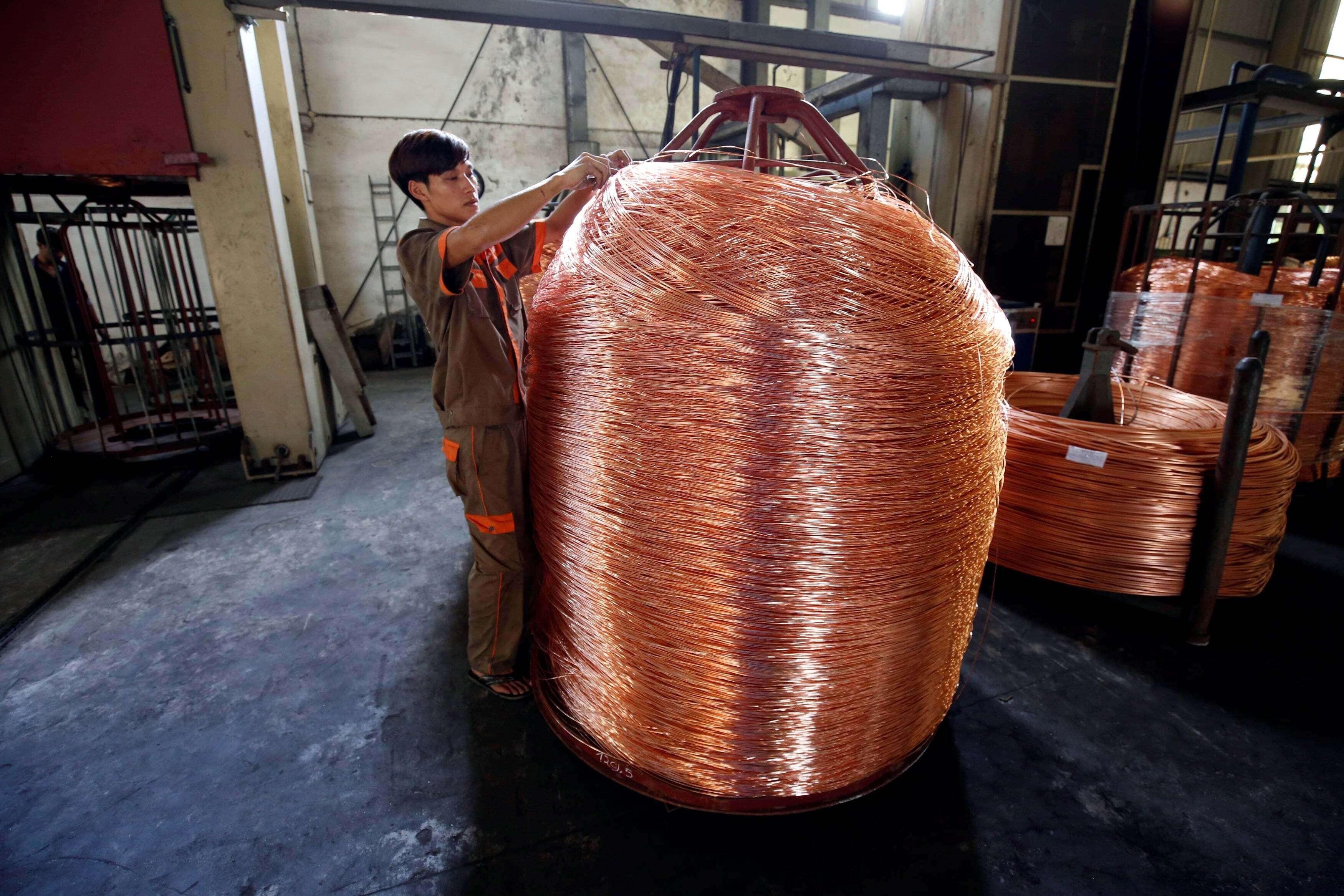As Western economies look inward, what’s the future for Latin American trade?

‘Open markets, inclusive and sustainable growth and tolerant societies are the only way forward’
Image: REUTERS/Stringer
Stay up to date:
Latin America
Latin America’s economic downturn seems finally to have bottomed out. Positive, if modest, growth is forecast for this year. But as the region recovers from the end of the commodity super cycle, a new threat is weighing on growth prospects: protectionism and economic nationalism.
People in the region could be forgiven for finding irony in the situation. At a moment when governments from Buenos Aires to Mexico City are committed to open trade and fiscal and monetary rectitude, these pillars of economic orthodoxy have fallen out of favour in the city that gave the Washington Consensus its name.
The fact remains, however, that over 40% of all merchandise exported from Latin America and the Caribbean is destined for the United States. For Mexico and Central America, the figure is closer to 80%. Many Latin American economies had been affected by anaemic global trade growth even before 2016; all have an interest in the preservation of the open global economy. The same, incidentally, is true for the United States, which sends one-fifth of all merchandise exports to Latin America and the Caribbean, along with substantial foreign direct investment and a growing services trade surplus.
What Latin American governments can do
Amid today’s complex trade politics, what should Latin Americans do? First, the region’s governments and business leaders should advocate strongly for keeping global markets open. One arena for this will be the World Trade Organization’s ministerial meeting in Argentina this December.
Second – and this is fully within their own control – they can bring decades of somewhat reluctant regional integration efforts to fruition. Deepening intraregional trade and investment would encourage the further development of region-wide value chains, and enable the productivity gains that come with greater specialization and scale. Not only that, it creates potential for the millions of micro, small and medium enterprises – many of which are women-owned – to get a foothold into these value chains. To do this, governments need to cut already low tariffs, identify non-tariff measures and remove any that have become unnecessary barriers, harmonize trade-related rules and procedures, and reduce trading costs by building better hard and soft infrastructure. Fully implementing the WTO trade facilitation agreement is one ingredient to reduce border delays and costs for traded merchandise.
A recent World Bank paper suggests that regional integration could foster deeper ties to global trade and investment flows, especially if Latin American governments were to lower their “most-favoured nation” tariffs with the rest of the world, and integrate their labour and capital markets. It would mean moving from free trade agreements to more solid economic and social integration partnerships.

Within the continent, there is scope to advance the integration of Latin America, with greater convergence between the Pacific Alliance and the Mercosur blocs. External processes can also help boost intra-regional integration. For example, reviving long-stalled negotiations with the European Union could help strengthen trade and investment flows within Mercosur.
Inclusion as an antidote to populism
Latin Americans are all too familiar with the boom and bust cycles associated with economic populism. Irresponsible deficit financing coupled with disregard for inflation and foreign exchange constraints can yield a few heady years of growth – before everything comes crashing down amidst devaluation and crisis.
But the populists are right in one key area: voters want jobs and equitable growth, and can hardly be faulted for that. The challenge is to find a more inclusive growth trajectory that can be sustained economically, ecologically and politically.
For the latter, domestic social policies remain essential, whether for things like conditional cash transfers or long-term investments in education, skills upgrading, and increasing women’s labour force participation. But fiscal space is limited, and the uncertain global outlook means governments will want to preserve macroeconomic buffers.
Broad-based growth in market incomes – that is, what people earn before taxes and transfers – is also necessary. This is where trade, and specifically, trade that involves small and medium-sized enterprises (SMEs), has a critical role to play.
Making trade inclusive: SMEs are the key
SMEs account for 60% to 70% of jobs, and the overwhelming majority of firms in most countries. Smaller businesses tend to have lower productivity and wage levels than large ones. But while small European firms are about two-thirds as productive as their larger domestic competitors, the figure in Latin America is more like 20% to 30%.
Narrowing this “productivity gap” would raise incomes in the large low-wage segment of the workforce, while contributing to overall growth and competitiveness. SMEs that trade across borders, or join international value chains, tend to grow faster, hire more people, pay higher wages, and become more productive.
SMEs by definition are hit harder by trade-related fixed costs, whether arising from border fees or regulatory compliance. They thus stand to benefit disproportionately from regional integration that lowers trading costs.
An analysis by the International Trade Centre suggests that regulatory harmonization for fresh foods alone could help unlock $15 billion in potential intra-regional trade, pointing to one high-return reform agenda that the Latin American Integration Association (ALADI) might usefully pursue.
While large Latin American businesses often have distant major economies as their top export markets, SMEs – those engaged in international commerce – tend to trade more within the region. Easing barriers to regional trade and investment would help more SMEs follow in the footsteps of Grupo Arcor, which started in 1951 as a candy factory in Argentina’s Córdoba province and is today a multi-billion dollar company with production facilities across Latin America and sales to 120 countries.
Prior to the recent recession, many countries in Latin America had been making progress on reducing economic inequality. In today’s less supportive global environment, concerted region-wide action to expand trade, together with a focus on ensuring that SMEs can share in the gains, would contribute to both growth and inclusion.
Economic policy that adheres to the tenets of orthodoxy while failing to deliver for large sections of society is doomed to fail. Advanced economies are learning these risks now. It is a film Latin Americans have seen before. Open markets, inclusive and sustainable growth and tolerant societies are the only way forward. We cannot leave anyone behind.
Don't miss any update on this topic
Create a free account and access your personalized content collection with our latest publications and analyses.
License and Republishing
World Economic Forum articles may be republished in accordance with the Creative Commons Attribution-NonCommercial-NoDerivatives 4.0 International Public License, and in accordance with our Terms of Use.
The views expressed in this article are those of the author alone and not the World Economic Forum.
Related topics:
Forum Stories newsletter
Bringing you weekly curated insights and analysis on the global issues that matter.
More on Trade and InvestmentSee all
John Letzing
July 24, 2025
Anthony Cano Moncada
July 23, 2025
Lisa Satolli
July 17, 2025
Yusuf Maitama Tuggar
July 10, 2025
Bright Simons
July 7, 2025





